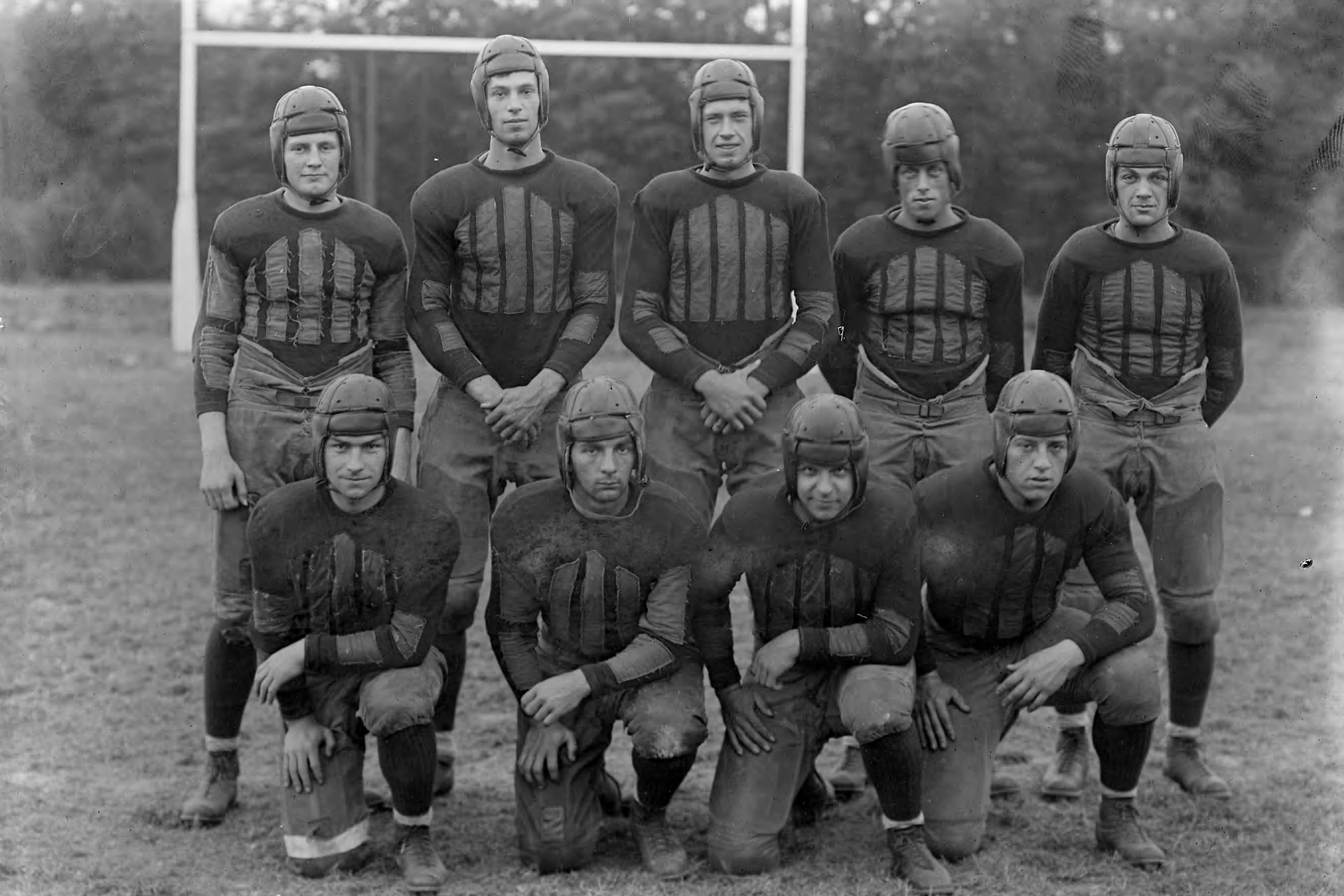The UConn Men’s Basketball takes on rival Syracuse on Monday, Dec. 5, at 7 p.m. at Madison Square Garden in the Tire Pro Classic. The Huskies will play the Orange, a game which could have been Orangemen vs. Orangemen if a proposal to adopt black and orange as UConn’s school colors came to a vote. The game will be televised on ESPN2.
Huskies bleed blue. Right?
But there was a time in UConn’s history when the athletic teams almost became known as the ‘Orangemen.’

Blue and white had been adopted as the school colors as early as 1893. But in the early 1920s, the football team of Connecticut Agricultural College (the forerunner to UConn) began wearing orange jerseys to distinguish themselves from a number of rivals whose official colors were blue and white. Indeed, some sportswriters in New England began to call them the “Orangemen of Connecticut.”
Far from clarifying matters, however, the move seems to have caused more confusion. In the Oct. 19, 1923 issue of the Connecticut Campus, under the headline, “Orange Shirted Warriors Take On N.H.,” the story began as follows:
“The Blue and White football machine left this noon for New Hampshire where they will meet the New Hampshire State eleven tomorrow afternoon. In the first home game of the season last Saturday, the Aggies showed their power against the strong Maine eleven, and the followers of the orange shirted warriors are expecting the team to show the same fighting qualities against their opponents tomorrow.”
The naming of a mascot was still more than 10 years away, and it was common to refer to Connecticut Agricultural College (forerunner to the University of Connecticut) athletes as “Aggies.” Yet the newspaper article cited two other nicknames based on school colors.
Another article in the same issue of the Connecticut Campus read:
“Things looked blue for the Aggies at the start, when Maine, receiving the ball well in her own territory on the kickoff, surged steadily down the field to the Storrs one-yard line, where the orange line held and Connecticut took the ball on downs.”
By fall 1928, the mix of colors led to a call by student leaders for change. The Connecticut Campus of Nov. 1, 1928 reported that the Student Organization had considered and tabled a measure to change from blue and white to black and orange.
“For several years, Connecticut’s football warriors have dashed out on the field in flaming orange jerseys, and have, in that short period of time, established a name which has traveled far and wide throughout the State, and neighboring states as well. Newspapers appear with articles lauding the efforts of our orange warriors and then, in some other paper, appears a like article which speaks of the victory of a fighting ‘White and Blue’.”
It was also noted that white and blue were the colors of rival teams New Hampshire and Rhode Island, as well as of Yale University, another Connecticut institution. No vote was taken on the proposed change, however, since it was felt that so important a move should not be made without giving the students time to think it over. Even if the move were passed by the student body, the alumni would have to ratify it before it became a reality.
An editorial in that issue stated that the color change “seemed to meet with the unanimous approval of the students,” and invited students and alumni to voice their opinions through letters to the editor.
Yet there was apparently little response, and an editorial in the Dec. 13, 1928 Connecticut Campus called on the student body to “put the motion to a vote and decide definitely to either accept or reject the proposed colors.”


The uncertainty was reflected in the design of the 1929 Nutmeg yearbook, which had a deadline before a vote could be taken. The otherwise all-black cover had several elements, including the college seal, in orange, and every page sported an orange border.
The issue of the colors was debated by the Student Organization on March 11, 1929, but again it was not put to a vote. Four days later, the Connecticut Campus reported, “The matter of college colors was placed on the table for the time being. It is expected that more agitation for a change will be created in the future.”
As it turned out, however, there was no agitation in the future. The proposal to adopt black and orange as the school colors never came back for a vote, and blue and white prevailed.
Adapted from an article by Mark Roy ’74 (CLAS) in the UConn Advance, Sept. 16, 2002.



